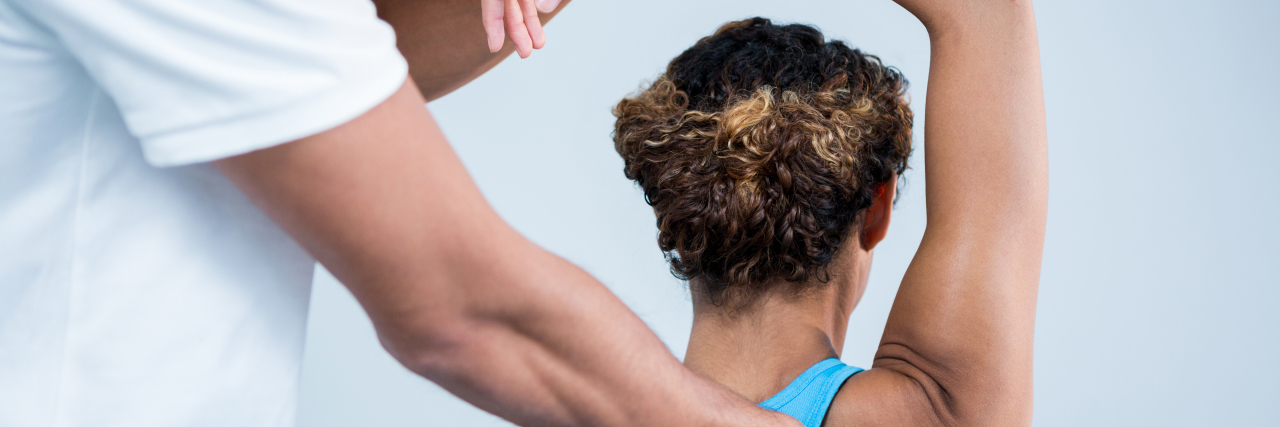I was able-bodied for 38 years until I developed Bickerstaff brainstem encephalitis (GBS), a rare, life-threatening illness resulting in traumatic brain and nerve injury. This, combined with my 18 month, bed-confined hospital internment, has left me a wheelchair user with scoliosis, kyphosis and contractures in both shoulders (frozen shoulder), and my right hand and wrist. When I discuss my “new body,” I don’t just say I am a person with a disability. I say that I am a wheelchair user and I have a disability. I do this because I see them as separate issues.
Interestingly, aside from a little neuropathy, there is nothing wrong with my legs. I have the strength and stamina to stand and walk. However, the damage to my brainstem has left me with frequent abdominal spasticity, balance issues, coordination issues, dizziness and peripheral diplopia. These are all a result of my illness, and contribute to my need for a wheelchair. But, truthfully, I rarely see this as a disability. I am fortunate to live in a country that looks after their disability community fairly well. I haven’t had many accessibility problems, and my electric wheelchair actually gets me places faster than walking. In fact, when scooting along, passing pedestrians on the street, I often feel fortunate to have my chair to get around. So I see my wheelchair not as limiting, but as a tool for my freedom and independence.
I see my actual disability as the twisted spine and contractured joints, and they are not a result of my illness. The real reason for my disability is the hospital stay. I was in a coma for six weeks, then paralyzed for a time, then, aside from my physio and short daily practice in a supportive wheelchair, I was confined to a bed for another 16 months.
No one warned us what could happen. Sure, they worried about things like bed sores and lung infections, and took measures to try to prevent these immediate threats. But besides the physiotherapist, who came a mere three times a week for an hour, no one ever exercised my body or advised my loved ones to do so. As a result, my spine slowly twisted the into shape in which it constantly lay, and my shoulder tissue slowly hardened and stiffened. I can no longer reach far out in front of me, nor can I raise my arms above my shoulders. And no physio or surgery can repair it.
So to be clear, needing a wheelchair is not my disability. The scoliosis, kyphosis, and contractures are, and they could have been prevented. Assisted bed calisthenics are easy to perform and tremendously helpful in preventing long term muscle, nerve, and joint issues. They should teach people whose loved ones are in a coma or confined to bed for a long time to do this, but unfortunately, it does not seem to be a priority. If you have a loved one confined to bed in the hospital, please ask about and request instruction on how to keep them supple. You could help prevent them from developing a permanent disability.
Getty photo by Wavebreak Media.

